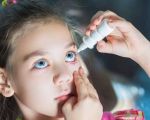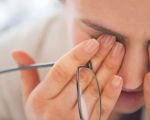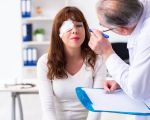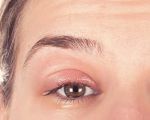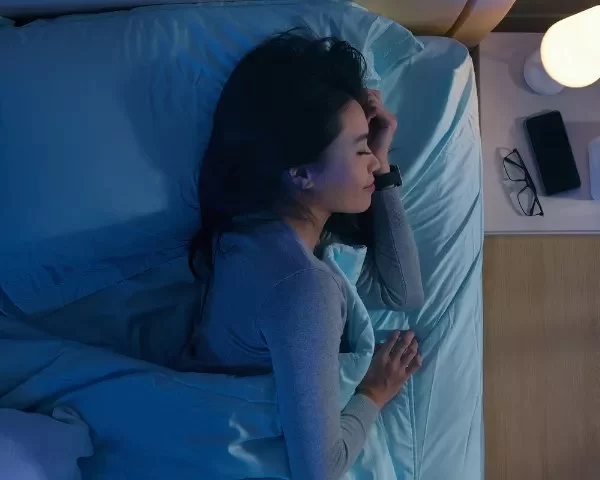
Effective Ways to Protect Eyes from Blue Light Exposure at Night for Better Sleep
- Understanding-Blue-Light-And-Its-Effects
- Practical-Strategies-To-Protect-Your-Eyes
- Technology-And-Tools-To-Minimize-Blue-Light
- Lifestyle-Habits-For-Better-Nighttime-Eye-Care
- Professional-Advice-And-Eye-Checkups
1. Understanding Blue Light and Its Effects
Blue light, a high-energy visible (HEV) light emitted by digital screens, LED lighting, and smartphones, can interfere with the body's natural sleep-wake cycle. Exposure to blue light at night suppresses melatonin production, the hormone responsible for regulating sleep. This disruption can lead to difficulty falling asleep, reduced sleep quality, and even eye strain over time.
1.1 The Science Behind Blue Light
Melatonin suppression occurs because blue light signals the brain to stay alert, tricking the body into thinking it is daytime. Studies show that even moderate evening exposure to blue light can delay sleep onset by up to an hour. Understanding this mechanism is the first step in learning how to protect eyes from blue light exposure at night for better sleep.
1.2 Symptoms of Overexposure
Common signs of excessive nighttime blue light exposure include tired or dry eyes, headaches, and difficulty concentrating. Many individuals report feeling alert and restless late at night due to prolonged screen usage, highlighting the importance of proper eye protection.
2. Practical Strategies to Protect Your Eyes
Implementing simple yet effective strategies can reduce the impact of blue light on your sleep and eye health.
2.1 Use Blue Light Blocking Glasses
Wearing blue light blocking glasses in the evening can filter out harmful HEV light, allowing the eyes to relax. Choose glasses with lenses that block at least 30-50% of blue light, especially during screen-intensive activities like reading, gaming, or working late.
2.2 Adjust Screen Settings
Many devices now include night mode or blue light filter options. Reducing screen brightness and enabling warm tones in the evening can significantly minimize melatonin disruption and eye strain.
2.3 Implement the 20-20-20 Rule
Every 20 minutes, look at an object at least 20 feet away for 20 seconds. This simple practice relaxes the eye muscles and reduces fatigue from prolonged screen exposure.
3. Technology and Tools to Minimize Blue Light
Several technological tools help users manage nighttime blue light exposure more effectively.
3.1 Screen Filters and Apps
Apps like f.lux or built-in device settings automatically adjust screen color temperature based on the time of day. These tools reduce exposure to blue light during evening hours without compromising usability.
3.2 Specialized Monitors
Modern monitors with low blue light technology are designed to reduce eye strain. These displays are particularly useful for professionals or students who work late into the night, providing a healthier visual experience.
4. Lifestyle Habits for Better Nighttime Eye Care
Alongside technological solutions, lifestyle adjustments can reinforce healthy sleep and eye care routines.
4.1 Limit Screen Time Before Bed
Reducing screen usage at least one hour before bedtime helps the body naturally prepare for sleep. Reading a book or practicing relaxation exercises can replace screen activity and improve sleep quality.
4.2 Maintain Consistent Sleep Schedules
Keeping regular sleep hours stabilizes circadian rhythms, making the body less susceptible to blue light disruptions. A consistent routine enhances overall sleep quality and reduces eye fatigue.
4.3 Create a Sleep-Friendly Environment
Dim ambient lighting in bedrooms and avoid bright LEDs at night. Pairing these environmental adjustments with blue light protection ensures a restful and restorative sleep experience.
5. Professional Advice and Eye Checkups
Consulting an eye care professional is essential for long-term eye health, especially if you experience persistent strain or sleep difficulties.
5.1 Regular Eye Exams
Routine eye exams detect early signs of strain or vision changes. Eye specialists can recommend tailored solutions, including prescription lenses with blue light protection.
5.2 Personalized Recommendations
Services from Eye Docs provide personalized guidance on managing blue light exposure, combining lifestyle advice, technology use, and protective eyewear to optimize sleep quality and eye health.
By combining practical strategies, technology tools, healthy habits, and professional advice, individuals can effectively protect their eyes from blue light exposure at night for better sleep, ensuring both visual comfort and restorative rest.





